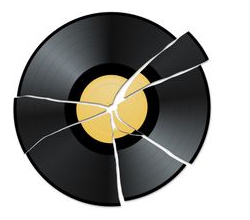
8) The Rise of Alternative Markets – Some markets thrived during the 2000s. The church market became a savior for many audio gear companies as churches installed bigger and better sound systems, recorded their services and even broadcast them on television or the web.
The sound system install market flourished as commercial building projects popped up everywhere.
While this was truly a bright spot for many companies in recent years, the recession has brought these markets to a resounding halt. The worse may be yet to come, unfortunately.
9) The Rise of the Home Studio – It’s now possible to have a studio on your laptop that’s much more powerful than anything The Beatles ever had to work with for less than a thousand dollars. Home recording is within reach of anyone that wants to do it, and everybody does.
This has been both good and bad. It’s brought about Music 3.0, where an artist is no longer bound by the marketing, distribution and sales system of the record labels, but the filter that the label provided and the help of the many professionals along the way had it’s advantages too.
Just because you have your own studio doesn’t mean you know how to use it. As a result, we have fewer real professionals than ever before who are making less money than ever before – and more and more people making their own music at home. It hasn’t resulted in better music so far.
10) The Influx of Chinese Gear – Audio and music gear is better than ever before on average. It’s really difficult to find what would be considered a “bad” piece of gear these days (I remember the old Kent guitars with the bowed necks when I was growing up – those were bad), and it’s cheaper than ever as well, all thanks to those hard-working Chinese near slave-laborers.
Just about every gear company does the same thing these days – design the piece here, manufacture it in China, and sell it as cheaply as possible against a dozen other manufacturers with the same product and idea. The problem is that while all the gear is good, not much of it is really great. That’s why we have more boutique gear manufacturers than ever. I wonder how they all survive?
11) The Failure of the Hi-Res Formats – In the beginning of the 2000s, the great hope for the industry and audio pros alike was the hi-res SACD and DVD-A formats. The trouble was, the public looked at these formats and yawned.
It’s difficult to hear hi-quality audio when your sound system is worse than what you could find in the typical college dorm room in 1970. Bad presentation, bad marketing, and no consumer interest all equal format death.
12) Change in Consumer Buying Habits – We all know this one. CD sales down, digital sales up, piracy still high. It’s the reason for most of the items on this list.
Bobby Owsinski is an author, producer, music industry veteran and technical consultant who has written numerous books covering all aspects of audio recording. For more information be sure to check out his website and blog.
